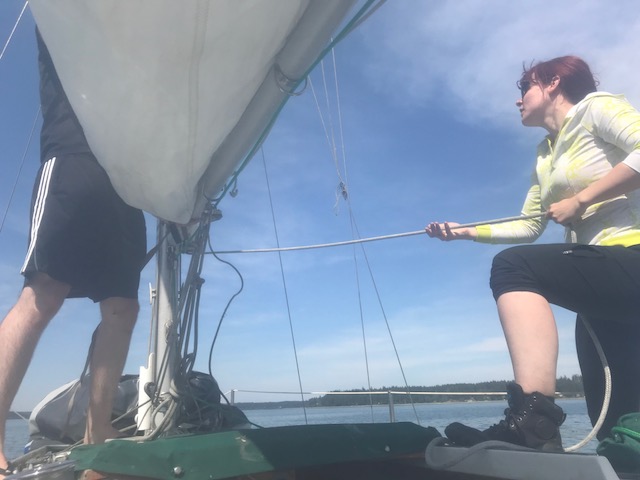A reminder for my ADD self.
The night before
Get rid of small distractions. Spend at least an hour the night before mentally reviewing things that you urgently need to catch up on.
Anything that you don’t think of during your review time is not urgent and does not need to be completed during your focus day. Tomorrow is not the day to organize your garage. Not even the dishes in the sink deserve your attention. As long as things are functional, mess doesn’t matter.
Warn your teammates that you’ll be busy. Turn your autoresponder on if necessary. I’ve started setting my status on slack to let my teammates know I’m working on something. That way I don’t feel guilty about ignoring them, and they know to call me if it’s urgent. Sometimes teammates don’t get it. You might need to explain to them that your work requires deep focus and you are easily distracted. They still might not get it.
If your work involves components or tools, lay them out neatly the night before. Make sure they are all working. If you don’t know how to use a tool/hardware, be sure to schedule time during your focus day for learning how to use that tool. You might need to reschedule your focus day for after you learn since it’s hard to estimate how long it will take you to learn.
If it involves software or a website, close everything on your computer except for that software or website. I use pocket to save things I want to read in the future and then I read them in lines or on a plane during takeoff. If you’re worried about closing a tab because it’s something you need to work on in the future, add the link to your to-do list for the future.
Break down your project into smaller tasks. Read “Getting things done” if you need a primer on how to do this. My rule of thumb is two big tasks (tasks that will take more than an hour) and 5 small tasks (task that will take less than 30 minutes) per day. Things always take longer than I expect them to take.
If your list is on a computer, transfer it to paper and draw out the blocks of time.
Visualize completing every task on your list without distractions, and how you will feel when you complete them.
Lay your workout clothes out the night before.
The day of
In the morning, as soon as you wake up, get out of bed. Don’t let yourself sleep for five more minutes. This will help you to feel less shitty about yourself. Exercise first thing in the morning. I like to go for a run. Make yourself a breakfast that’s full of protein.
Meditate for 5 minutes. Really clear your mind. Repeat every four hours or as needed.
Put your phone inside a bag inside a closet and close the door. Even the presence of a phone can be distracting.
If you need your phone to take photos or video of your project, set it to airplane mode. If you need your phone for music...put on a record (you hipster!) or play music from your computer instead.
Unless you really hate the playlist, don’t keep changing the music. You’re not practicing for your DJ career.
Resist the temptation to turn on a podcast. Podcasts are great for mindless work, but can be distracting. Turn on your favorite focus playlist instead.
Do the hardest thing on your task list first. This should also be the first thing on your list.
It’s ok to feel distracted. Just like in meditation, sometimes you’ll get distracted from the task on hand. You might open gmail in a tab, or even facebook. If you do, simply remember why you’re working on what you’re working on and begin again.
Sometimes you might have a disaster during the focus day.
Your sailboat might suddenly drift off its anchor and crash into your neighbor’s dock. Your chickens might escape and destroy the neighbor’s landscaping. Your washing machine might overflow and flood the basement. Simply get back to what you were doing as soon as the crisis is taken care of, and immediately plan another focus day to finish what you weren’t able to finish.
Stop at a reasonable hour. My maximum focus time is about 10 hours a day. I can pull super human feats of all-night focus when I’m stressed, but that destroys my focus for the rest of the week.
Do a focus day on average at least one day a week. Focus takes practice.
Stop making excuses about why your time isn’t valuable.
Stop making excuses about why you need to always be on call for other people. Your time is better spent focusing. You’re available four other days of the week, and they can reach you another day.
Your focus time is most important, and you deserve to live the life that you want to live, and create the things that you want to create. Nobody else can take that away from you, because you aren’t going to let them.





















